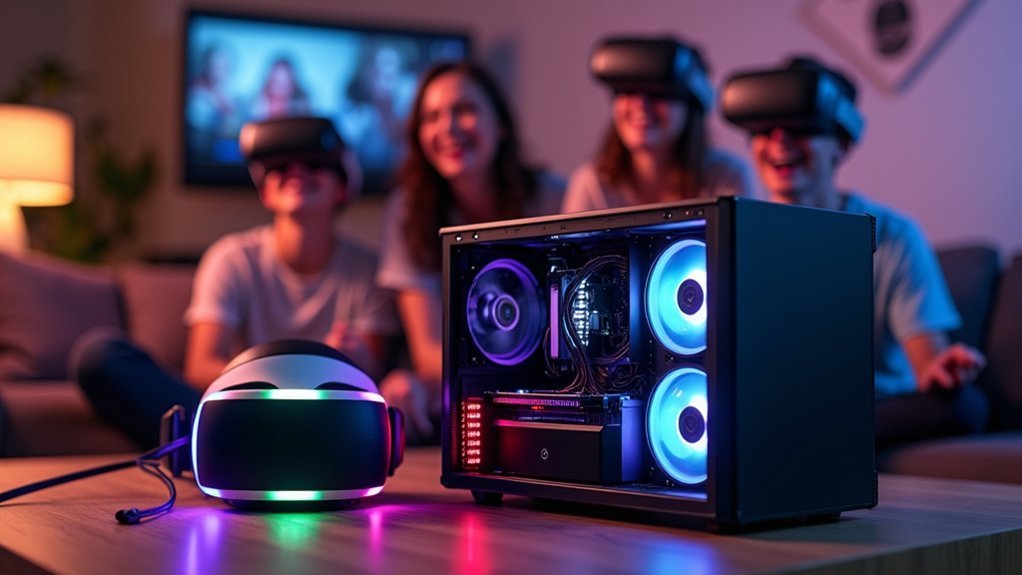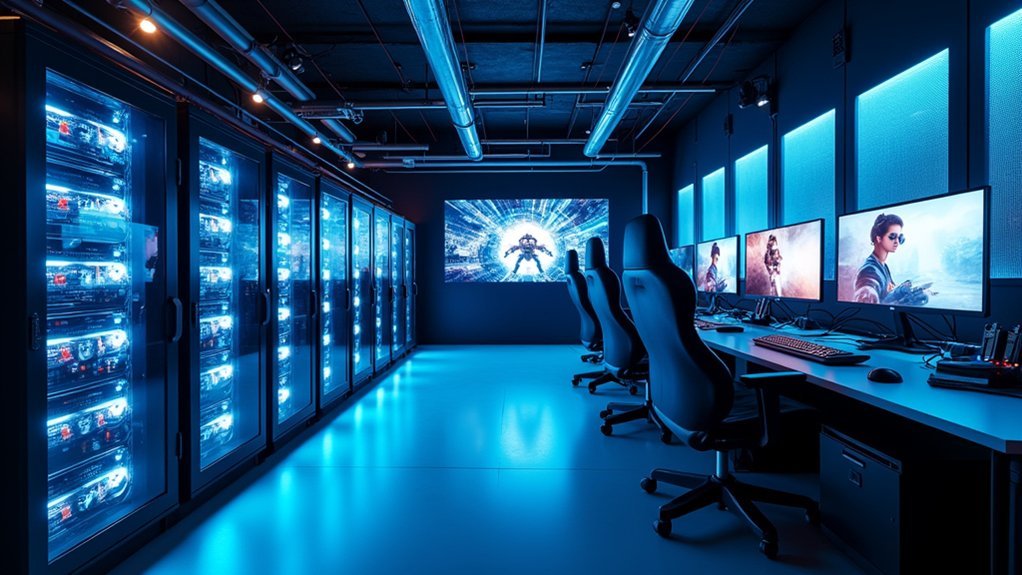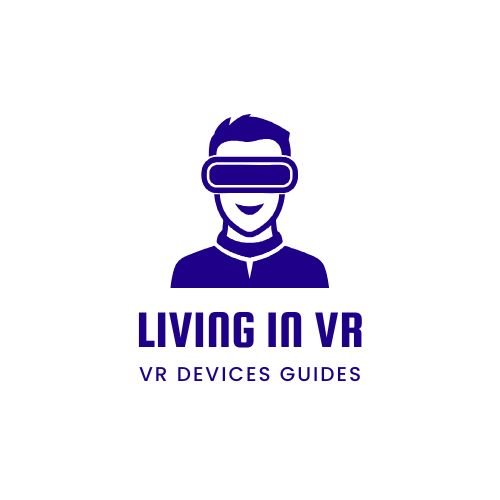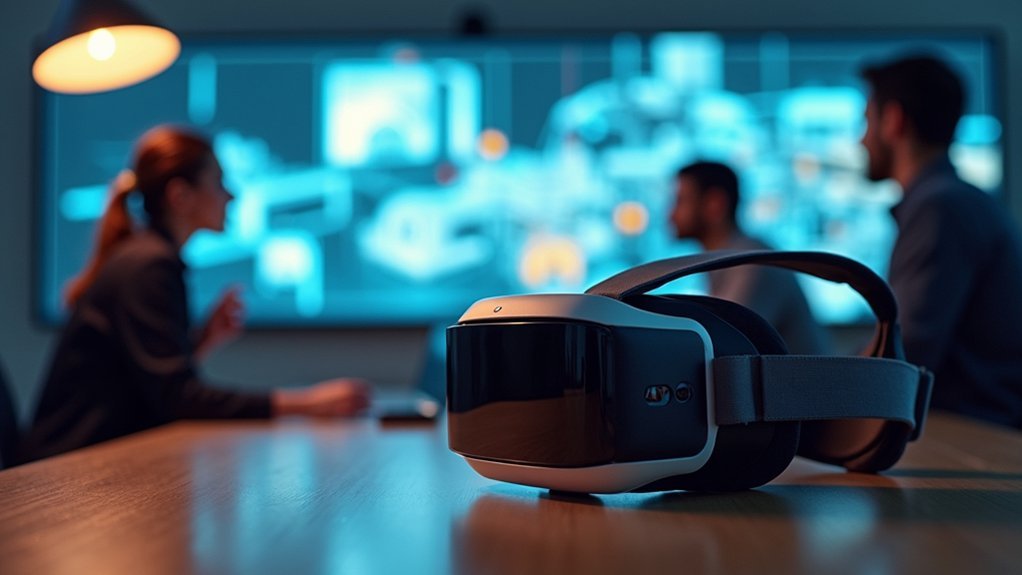You’ll need different VR server configurations depending on your user base: budget setups with Intel i3-10100F and 16GB RAM handle small groups, while mid-range Ryzen 7 3700X systems with 32GB RAM support growing communities. High-performance servers require i7-12700K or Ryzen 9 5900X processors with 64GB RAM for large-scale multiplayer, and enterprise solutions use Xeon or EPYC CPUs with dedicated GPUs. All configurations need NVMe SSDs and 1Gbps+ network connections for ideal performance. The thorough breakdown below covers each configuration’s specific requirements and costs.
Budget-Friendly VR Server Configuration for Small Groups

When you’re setting up a VR multiplayer server for small groups without breaking the bank, you’ll want to focus on components that deliver solid performance at reasonable prices.
Start with an Intel Core i3-10100F processor, which costs around €70 and provides excellent single-core performance for VR gaming applications.
Your server needs a minimum of 16GB RAM to handle smooth gameplay, though 32GB is better for complex VR experiences.
Install at least a 512GB NVMe SSD to drastically reduce loading times and boost performance.
Don’t forget network infrastructure – you’ll need a dedicated wired connection with 1 Gbps speed minimum for low-latency communication.
While your server doesn’t require a dedicated GPU, make certain client machines have at least an Nvidia GTX 1660 Super for proper VR rendering.
Mid-Range Multi-Core Setup for Growing Communities
When you’re building a mid-range VR server for growing communities, you’ll need to balance performance with cost-effectiveness through strategic hardware choices.
The Ryzen 7 series offers an excellent sweet spot between single-core speeds and multi-threading capabilities that can handle increased player loads without breaking your budget.
You’ll also want to carefully scale your RAM requirements as your community expands, starting with 32GB and planning for future upgrades to maintain smooth performance.
Ryzen 7 Performance Balance
Balance defines the Ryzen 7’s appeal in the VR multiplayer server landscape, where you’ll find processors like the Ryzen 7 3700X delivering exceptional multi-core performance without breaking your budget.
With 8 cores and 16 threads, you’ll handle expanding player bases efficiently while maintaining smooth gaming performance across demanding VR applications.
The 3700X’s 3.6 GHz base clock and 4.4 GHz boost capability guarantees responsive multiplayer scenarios.
You’ll want to pair it with at least 32GB of DDR4 RAM for optimal concurrent user handling.
Adding NVMe SSD storage, particularly the Samsung 980 Pro, dramatically improves load times and user experience during multiplayer sessions.
This configuration strikes an ideal balance between cost-effectiveness and performance, making it perfect for mid-range setups supporting growing VR gaming communities.
Scaling RAM Requirements
While the Ryzen 7 provides the processing foundation, your RAM configuration determines how many concurrent VR players you’ll successfully support without performance degradation.
For growing communities, 16GB RAM serves as your minimum baseline, ensuring smooth gameplay for moderate user loads. However, upgrading to 32GB RAM becomes essential when you’re hosting numerous players simultaneously, especially with resource-intensive features like body tracking and real-time physics.
You’ll want dual-channel configurations to maximize bandwidth and improve data transfer rates.
As your community expands, implement performance monitoring tools for dynamic memory allocation optimization. Consider motherboards supporting up to 64GB capacity for future-proofing—this scalability accommodates increasing user bases and evolving game complexity without requiring complete hardware overhauls.
High-Performance Dedicated Server for Large-Scale Multiplayer

Since large-scale multiplayer VR environments demand exceptional computational power and network stability, you’ll need a dedicated server configuration that can handle dozens of concurrent players without compromising performance.
Your Intel® Core i7-12700K or AMD Ryzen 9 5900X processor provides the single-core performance essential for real-time calculations while managing multiple player threads efficiently.
Your Dedicated Game Server requires sufficient memory – 64GB RAM guarantees smooth operations under heavy loads.
Pair this with NVMe SSDs like the Samsung 980 Pro for lightning-fast asset loading that prevents lag spikes.
Essential optimization strategies:
- Disable core parking – Release your processor’s full potential for consistent performance
- Install robust 1 Gbps NIC – Secure stable, low-latency connections that keep players immersed
- Configure power settings – Eliminate stuttering during peak usage moments
Enterprise-Grade Infrastructure for Professional VR Environments
When deploying VR systems in enterprise environments, you’ll need infrastructure that surpasses consumer-grade specifications to support mission-critical applications and professional workflows.
You’ll require high-performance CPUs like Intel Xeon or AMD EPYC processors with multiple cores to handle simultaneous connections and complex computations efficiently.
Don’t underestimate memory requirements—you’ll need a minimum of 64GB RAM to maintain smooth operation during intensive VR applications while supporting multiple users without performance degradation.
Memory demands are critical—64GB RAM minimum ensures seamless performance across multiple concurrent VR users without system bottlenecks.
You’ll also need NVMe SSDs with at least 2TB capacity for rapid data access and faster loading times.
High-speed network interfaces of 10Gbps or higher are critical for minimizing latency.
Consider implementing dedicated graphics processing units for real-time rendering of high-resolution displays and complex VR environments, depending on your server’s specific role.
Hybrid Gaming and VR Server Architecture

Although traditional gaming servers and VR infrastructures have operated independently, you can now leverage hybrid architectures that seamlessly support both environments on unified hardware.
Your CPU choice becomes critical – the Ryzen 7 3700X or Intel i7-12700K delivers the processing power needed for demanding VR workloads while maintaining excellent gaming performance.
You’ll need 32GB of RAM minimum to handle multiple simultaneous sessions without bottlenecks.
Your storage strategy should center on NVMe SSDs like the Samsung 980 Pro for lightning-fast asset loading across both platforms.
- Transform your business by serving twice the audience with half the infrastructure costs
- Eliminate the frustration of managing separate hardware stacks for different gaming experiences
- Unlock unlimited potential with virtualization solutions like Proxmox maximizing every hardware dollar
Cloud-Based VR Server Solutions and Specifications
Cloud-based VR server solutions scale beyond on-premise hardware limitations by leveraging enterprise-grade processors like Intel Xeon Platinum 8380 or AMD EPYC 7763 that handle hundreds of concurrent users across distributed infrastructure.
You’ll need minimum 32GB RAM, though 64GB delivers ideal performance for intensive multiplayer sessions. NVMe SSDs with 1TB+ capacity eliminate bottlenecks while reducing load times considerably.
High-speed internet connections require at least 1 Gbps bidirectional bandwidth to maintain seamless user experiences without latency spikes.
Gigabit speeds deliver lag-free VR experiences by ensuring sufficient bidirectional bandwidth for real-time data transmission across multiple concurrent users.
Your cloud infrastructure should incorporate automated load balancing and redundancy protocols that prevent downtime during peak usage periods.
These cloud-based VR server solutions offer superior scalability compared to traditional setups, automatically adjusting resources based on demand while maintaining consistent frame rates across all connected clients through intelligent resource allocation algorithms.
Future-Proof VR Server Hardware With Scalability Features
Five key components form the foundation of future-proof VR server hardware that’ll scale with tomorrow’s demanding applications.
You’ll need a powerful CPU like the Ryzen 7 5800X or Intel Core i9-12900K to handle complex VR environments and high player counts with exceptional single-core performance.
Your RAM configuration should include 32GB or more of DDR4/DDR5 to support multiple VR instances and high-resolution textures seamlessly.
A high-speed Network Interface Card with 1 Gbps capability guarantees minimal latency for smooth multiplayer experiences.
Consider these scalability essentials:
- PCIe 4.0+ motherboards – Embrace future GPU and storage upgrades
- NVMe SSDs with 1TB+ capacity – Eliminate stuttering and loading delays
- Modular hardware architecture – Scale components as demand grows
Frequently Asked Questions
What Is the Best Hardware for Game Hosting Servers?
You’ll need a high-performance CPU with strong single-core performance, 16-32GB RAM, NVMe SSD storage, and gigabit ethernet. Don’t forget regular monitoring and optimization for peak server performance across all games.
What Are the Hardware Requirements for a Game Server?
You’ll need a quad-core CPU with strong single-core performance, 16GB RAM minimum, SSD storage for faster loading, and a 1 Gbps network card for low-latency multiplayer connections.
How Much RAM Do I Need for a Gaming Server?
You’ll need at least 8GB RAM for light gaming servers, but 16GB’s recommended to avoid performance issues. For heavy missions or larger player bases, you should upgrade to 32GB for ideal gameplay.
Can VR Be Multiplayer?
Yes, you can definitely play VR in multiplayer mode. You’ll connect with friends in shared virtual environments through games like VRChat and Rec Room, experiencing immersive social interactions together.





Leave a Reply